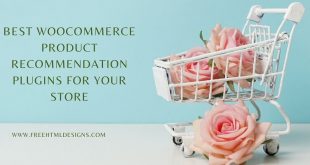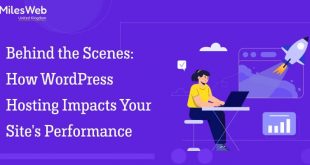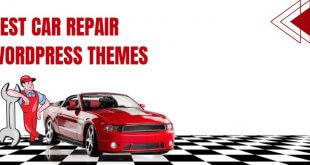WordPress is the most stable platform, however, we recommend carrying out 7 WordPress Maintenance Tasks to keep your site secure and fully functional. Whether you run a large-size or a small-scale business, you need to regularly maintain your website. A website is like your car that needs to be fueled up to function and run properly. One thing which is often heard by people about WordPress is that it’s too hard to maintain. While we agree that WordPress requires more maintenance than other website builders, we still don’t believe that the amount of maintenance is impossible for the average business owner to complete.
As long as you know what needs to get done and can dedicate a little bit of time each month to performing some maintenance, there is no reason why you can’t have a fully functional WordPress site.
Importance Of Maintaining WordPress Site
To keep your site fully functional, you should carry out a routine operation to ensure that all site parts are working correctly.
When it comes to WordPress, it becomes somewhat more critical.
If your livelihood depends upon your WordPress site, then this might be a challenging and full-time job for you to carry out.
To keep up with constant WordPress updates and to deal with ever-evolving, ever-lurking website security issues, investing in a WordPress maintenance plan is a good option. It facilitates keeping your website and ensures all the hard-word and time you invested in building your site must be worth it.
But the most frequent question WordPress users ask is what aspects they should maintain. To answer this query we have gathered 7 important WordPress maintenance tasks below so let’s explore!
7 WordPress Maintenance Tasks
Enlisted below are the seven monthly tasks we recommend you make time to keep your site fully-functional and malware-free.
1. Always Keep Your Website Backup
WordPress is one of the most stable website platforms to choose from. However, that doesn’t assure it’s not invincible. In any unfortunate event, if your site goes down or is hacked by cyberpunks, having an off-site back-up can save you from the catastrophic effects of building your website again from scratch.
Ideally, we recommend having a complete back-up of your site on a remote server. The golden rule is to back-up your site every week, however, if you cannot do it weekly, try to back-up your site every month, so if anything goes wrong, you’ll be able to recover it without any hassle.
2. Update All Your Plugins And Themes
Plugins and themes are the two most essential components of a WordPress site. To keep them secured and functional, you need to make sure they’re always updated.
You can easily update any theme or plugin from the fly. However, you should also consider compatibility issues while updating WordPress installation.
We recommend taking your website to a staging environment to update plugins or themes to avoid any such issue.
In this manner, while updating WordPress plugins or themes, you won’t fall into compatibility issues. Once you’re done, you can take your website live.
If you’re no longer using any theme or plugin because they’re not useful anymore, we suggest you eliminate them. All plugins and themes do take up space, but the worst part is if you avoid updating them, cyberpunks might use them to employ malicious codes and hack your site.
3. Security Monitoring And Protection
Malicious individuals are always in search of new ways to breach your site security. Usually, web owners are not aware of the fact that search engines like Google backlists malware-infected sites.
A malware-infected site is a security risk to their visitors. It spreads and escalates malware attacks on other sites too. Therefore, you need to ensure that your site security is at its best.
Therefore, comprehending the vulnerabilities and taking precautions is essential to the safety of your site.
To help you keep a close eye on your WordPress site security, you can use security plugins like Sucuri and iThemes Security.
4. Removing Dead Links
Deadlinks are a big-turn-of. Deadlinks send a silent message to your visitors that you are likely too busy and ignorant to look after your website. It negatively impacts your brand reputation.
Therefore, it is recommended to frequently scan for broken links and resolve them to ensure visitors can navigate your website easily. To help your visitors further, add a search bar or a site map as well.
Deadlinks can also affect your search rankings. When there are multiple broken links on a website, it tells the search engine that your website has low and stale quality content, which signifies your website isn’t too good to send visitors to it.
To make this task easier for you, use tools like W3C checker to search for any dead links and fix them.
5. Clear Website Cache
After updating WordPress core, plugins, and themes, it’s the time for site optimization for load times. It can be done when you clear the web cache.
A cache stores all the website’s data. On the one hand, it is beneficial for the return visitors; however, it can be quite counterintuitive to keep too much of it. The more the storage, the slower load times.
When you feel the site is taking too long to load, go and clear the cache for maintaining fast load times.
Once in a month, you should clear your site cache to optimize your site speed. There are popular caching tools like W3TotalCache or WP Super Cache to carry out this necessary operation easily.
6. Inspecting Website Front-end
While maintaining our websites, we often tend to forget to check how the front-end looks like. Once in a month, at least, we recommend you inspect your site front-end to ensure everything is in order.
Check for the basic things like flaws in the designs or type errors as these minor short-comings also impact your site users, and they might run to any of your competitors, so you better watch out.
7. Publishing A Blog Post
If SEO is a focus for you, even if you want to build some brand trust between you and your potential buyers, a blog post is an excellent method for doing that. To boost your SEO ranking and bring in more traffic, we suggest you post highly valuable and quality content regularly.
Endnote
For some WordPress users, these are maintenance tasks that are too much to handle. However, if such is the case, we suggest you signup for WordPress maintenance and support services.
Among many WordPress maintenance and support services providers, Codup for the past 8 years has been vigorously providing optimal WordPress maintenance and support services, helping customers boost their business growth massively.
Choosing a WordPress maintenance and support services provider or maintaining your WordPress site on your own is your choice. But, make sure to follow the above guidelines to keep your website secured and fully functional.
Read Also – Best Free WordPress Maintenance Mode Plugins
 free html design Free html design templates
free html design Free html design templates





